The portable electric poultry netting I use in my backyard has been generating quite a buzz, so I thought I’d share a little more info about it. There are times in every flock when chickens should be separated from other flock members for for their safety such as after an injury, to prevent continued conflict, for breeding purposes, etc. Predator-proofing a flock in the yard, keeping chickens out of the garden or road, and providing fresh pasture to a flock are also terrific uses of portable electric poultry netting.
We setup 100 feet of Poultry Net Plus fencing behind the playhouse while we converted it into a coop. If you’re considering poultry fencing- electric or not- I recommend speaking with experts to discuss available options and which will best meet your needs; Premier 1 Support can be reached at 800-282-6631.
We don’t always use the charger to contain the Polish pullets, but when two of our roosters began challenging each other, we used it to keep them separated in the yard until we could re-home one of them, a much better alternative than keeping one of them in a crate.
How electric poultry netting works:
With the exception of the bottom strand, the horizontal strands in most nets connect to an energizer that sends a strong electric pulse down the wires approximately once per second. When an animal touches the netting with its sensitive nose, head or ears, the energizer pushes a pulse of electrons out through the netting, which results in a quick, uncomfortable muscle contraction before the charge exits into the ground through the animal’s feet. The unpleasant sensation then causes the animal to avoid the fence. The more contact the animal has with the ground the greater sensation it will feel, so, a fox or raccoon with large, soft feet will get a bigger shock than a chicken. Technical questions and answers about electric poultry netting use and safety can be found at the Premier 1 Supplies website HERE.
Kathy Shea Mormino
Affectionately known internationally as The Chicken Chick®, Kathy Shea Mormino shares a fun-loving, informative style to raising backyard chickens. …Read on


shop my SPONSORS
The portable electric poultry netting I use in my backyard has been generating quite a buzz, so I thought I’d share a little more info about it. There are times in every flock when chickens should be separated from other flock members for for their safety such as after an injury, to prevent continued conflict, for breeding purposes, etc. Predator-proofing a flock in the yard, keeping chickens out of the garden or road, and providing fresh pasture to a flock are also terrific uses of portable electric poultry netting.
We setup 100 feet of Poultry Net Plus fencing behind the playhouse while we converted it into a coop. If you’re considering poultry fencing- electric or not- I recommend speaking with experts to discuss available options and which will best meet your needs; Premier 1 Support can be reached at 800-282-6631.
We don’t always use the charger to contain the Polish pullets, but when two of our roosters began challenging each other, we used it to keep them separated in the yard until we could re-home one of them, a much better alternative than keeping one of them in a crate.
How electric poultry netting works:
With the exception of the bottom strand, the horizontal strands in most nets connect to an energizer that sends a strong electric pulse down the wires approximately once per second. When an animal touches the netting with its sensitive nose, head or ears, the energizer pushes a pulse of electrons out through the netting, which results in a quick, uncomfortable muscle contraction before the charge exits into the ground through the animal’s feet. The unpleasant sensation then causes the animal to avoid the fence. The more contact the animal has with the ground the greater sensation it will feel, so, a fox or raccoon with large, soft feet will get a bigger shock than a chicken. Technical questions and answers about electric poultry netting use and safety can be found at the Premier 1 Supplies website HERE.



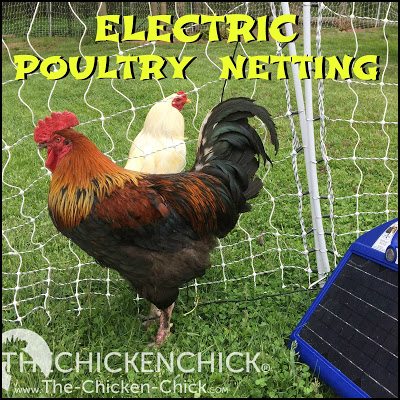
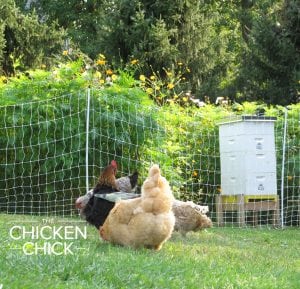
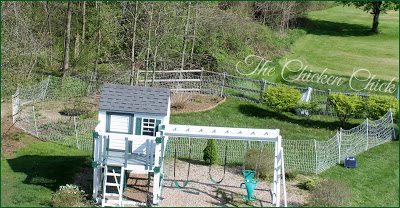

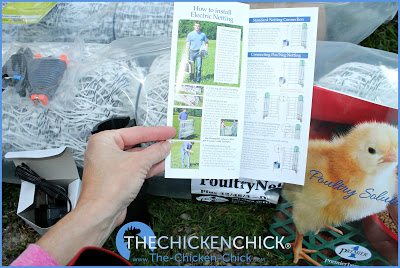
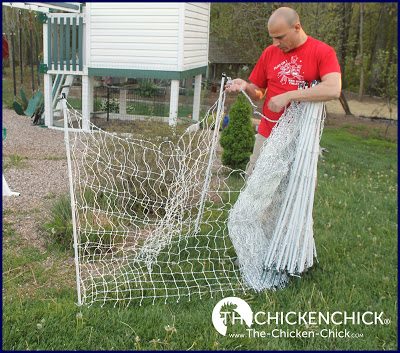
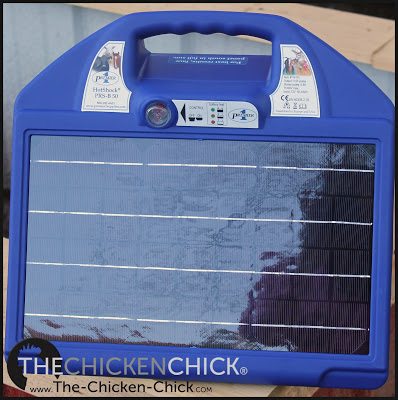
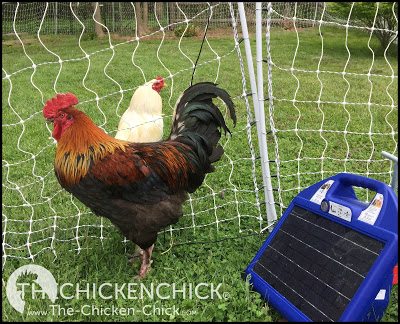
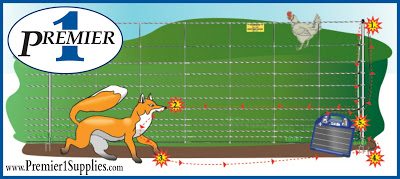
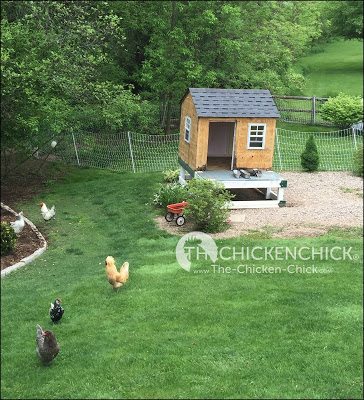

























I would love to win this! My 23 hens would love it!
What a cool solution for fencing! We could use something easy to set up and take down! We are always moving our chickens free range around.
I was wondering about that fence it looks easy to move too?
I am new to all of this and finally came upon this website. Am grateful and and appreciate all the well-needed information. :)
Lisa
Love your blog. I get so much information I need for the care of my chickens from you.